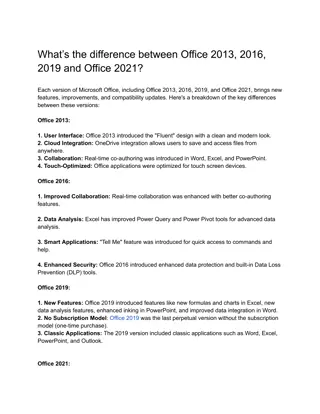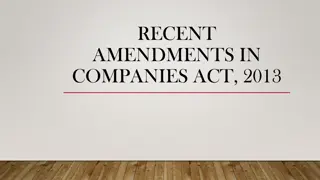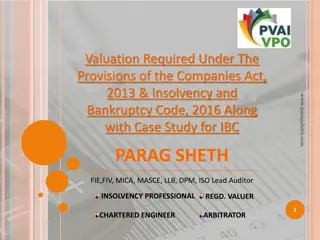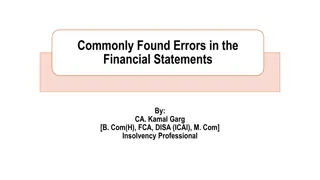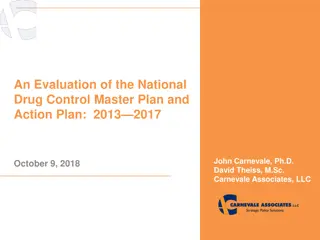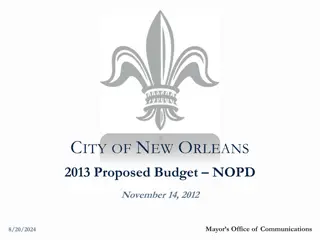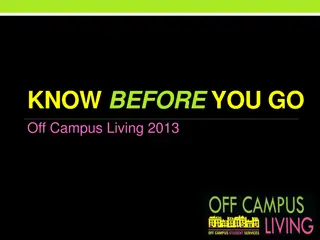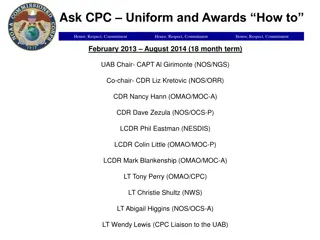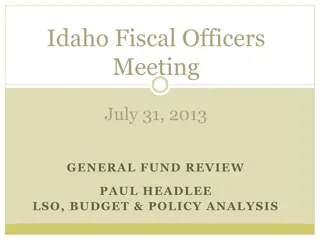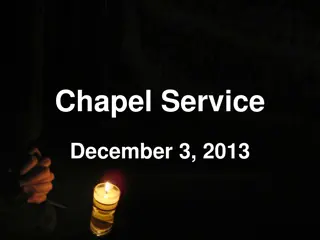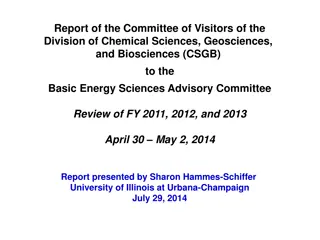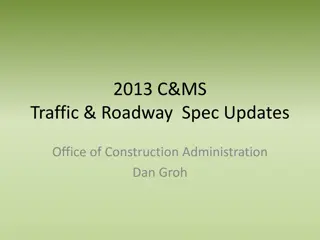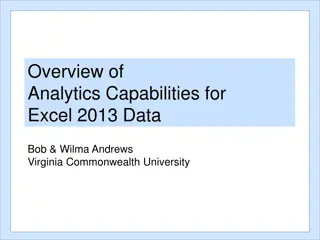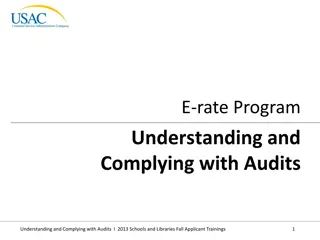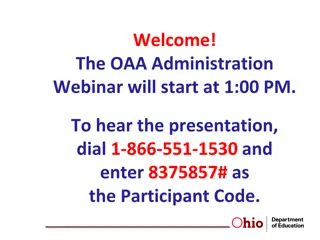
Choosing Between Private and PLUS Loans for Student Funding
Learn about the differences between private loans and PLUS loans when considering options for financing education. Explore eligibility, costs, repayment terms, and strategies for smart borrowing. Discover valuable resources for both schools and families to navigate the loan selection process effectively.
Download Presentation

Please find below an Image/Link to download the presentation.
The content on the website is provided AS IS for your information and personal use only. It may not be sold, licensed, or shared on other websites without obtaining consent from the author. If you encounter any issues during the download, it is possible that the publisher has removed the file from their server.
You are allowed to download the files provided on this website for personal or commercial use, subject to the condition that they are used lawfully. All files are the property of their respective owners.
The content on the website is provided AS IS for your information and personal use only. It may not be sold, licensed, or shared on other websites without obtaining consent from the author.
E N D
Presentation Transcript
What Is the Right Type of Loan? Comparing Private Loan and PLUS Loan Options Allyson Bentz Assistant Dir. of Financial Aid Accredited Financial Counselor Geneva College Ben Brudnock Assistant Vice President EFS Account Executive Wells Fargo
Agenda Funding the gap Recent statistics and trends Comparison of PLUS & Private loans Eligibility Cost Repayment Understanding APR and rate shopping Strategies & school communication examples Resources for schools and families 3
Common Ways to Pay After the free money and savings run out .. some wise, some not so much ..! Google Credit Cards PLUS Powerball Lottery 1 in 146,107,962 Direct Loan Retirement Accounts Educational Private Loans Perkins Hold Out Until Your Kid Gets to the 11th Grade then Start Up a 529 Plan Payment Plans Home Equity Education Loan Resource Continuum Source: Adapted from 2012 PASFAA Fall Conference Presentation 4
PLUS & Private Loan Volume Trends SOURCE: The College Board, Trends in Student Aid 2012 5
Ten Year Trend in average aid per FTE SOURCE: The College Board, Trends in Student Aid 2012, Figure 1
Credit Factoid: 19.6% of the population has a credit score of 750-799 18.1% of the population has a credit score of 800-850 Source: MyFico.com 7
Federal and Private Comparison, continued New Direct Loan formulas, per H.R. 1911, for 2013-14: 10-yr T note (1.81%) + 2.05% undergrad = 3.86% + 3.60% graduate = 5.41% + 4.60% PLUS = 6.41% (8.25% cap) (9.50% cap) (10.50% cap) 10-year Treasury note from 5/8 to 10/2 3.01% (52-week high) 2.61% 8
10 Understanding APR & Rate Shopping To fee, or not to fee that is the question Direct PLUS in 2013-14 Loan amount 4.204% fees Interest rate Term Monthly payment Cumulative payment $14,165.77 Interest paid Private Education Loan Loan amount Zero fees Interest rate Term Monthly payment Cumulative payment $14,168,96 Interest paid $10,000 ($420.60) 6.41% 120 months $118.05 $10,000 ($0) 7.38% 120 months $118.08 $4,165.77 $4,168,96 The up-front fees on Direct PLUS pushes the actual Annual Percentage Rate (APR) to 7.33% The example above shows a break-even point on a $10,000 loan between PLUS and a zero-fee Private Education Loan Calculator used: FinAid.org
11 School Communication Strategies Is your school Pro-PLUS? Here s a website example: Before applying for a private or alternative education loan, you may qualify for grants and/or other assistance under Title IV of the Higher Education Act. Loans under Title IV include the Federal Stafford and the Federal PLUS loan. These Title IV loans may have terms and conditions that may be more favorable than the terms and conditions of private education loans. Is your school neutral Here s a website example: Private Educational Loans and Direct PLUS Loans should be considered as a last resort, but may be necessary to finance a college education. To learn more about these options, please review the comparison chart and the suggestions below. If you have good credit history, a private loan may cost less than a federal student loan- be sure to consider all of your options and compare carefully!
12 School Communication Strategies, continued SOURCE: Geneva College
School Award Letter Strategies, continued Details on all plans and payment options can be found at www.geneva.edu/studentaccounts or by calling the Business Office (724.847.6875). Enroll in Payment Plan Enrollment in the interest free monthly payment plan begins in March (for 12 month plan) and ends in August (for 6 month plan), so please sign up early! You must sign up for an amount that will cover both the fall and spring semester balances. If you are unsure of the annual balance due, feel free to estimate you can always change the plan amount at a later date. Enroll as soon as possible If you are interested in borrowing additional loans, there are two options for those who qualify: Direct Parent PLUS Loans (apply online at www.studentloans.gov) Private Student Loans (get more details at www.geneva.edu/privateloans) Apply for Additional Loans Apply as early as possible Our website also has a comparison chart of these two options, suggestions on how to get the best interest rate, and additional details: www.geneva.edu/fa. Please be sure to apply early and for the amount needed for the entire year. If loan changes need to be made after approval, please notify the financial aid office in writing.
Staff Training Is everyone aware of interest rates and How they are determined? When they change? Future predictions? Business Office Admissions Counselors Support Staff
Federal Student Loan Interest Rates Undergraduate For loans first disbursed between July 1 and June 30 of Year Subsidized Unsubsidized PLUS 06-07 and 07-08 08-09 09-10 10-11 6.80% 6.00% 5.60% 4.50% 7.9% Direct 8.5% FFEL 6.80% 11-12 and 12-13 13-14 3.40% 3.86% 6.41% 3.86% Graduate Year Subsidized Unsubsidized PLUS 7.9% Direct 8.5% FFEL 6.41% 2006-2013 13-14 6.80% N/A Perkins Loan: 5% fixed rate 6.80% 5.41%
Whats the bottom line? All consumers should make an informed decision before deciding on a loan. There is no down side to shopping around. Each family s situation is unique Applying for multiple credit-based student loans (rate shopping) in a 30-day window is treated as one inquiry when determining a credit score* Applying for a private student loan does not impact ones eligibility for a Direct PLUS Loan for parents or graduate and professional students All approved borrowers get the same PLUS deal: 6.41% with 4.2+% up-front fees. While PLUS may be a good option for those with less than excellent credit, private loans may offer those with above average credit a better rate, zero fees and more repayment discounts. *Source: myFICO.com 19
Resources for Schools and Families FastWeb s Quick Reference Guide on Choosing a Student or Parent Loan Studentloans.gov Federal v. Private Loan comparison chart FinAid.org s Private Loan Comparison PA Marketplace ELM Select Fast Choice/Fast Alt Loan Choice by Great Lakes Choice wrap from Wells Fargo Other lender publications/comparison tools 20

